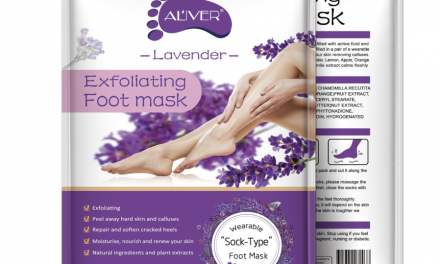
There has always been controversy surrounding self-exams and what benefit, if any, these may have in regards to a person’s health. It can be confusing to muddle through all of the data. Here is my take on the most important self-exams to do and how often to do them.
Body Weight
Usually, women are not really excited to hear about this one. Yet, checking and maintaining a healthy weight is one of the most important self-exams you can do. Obesity significantly increases your risk of heart attacks, strokes, and certain cancers.
Calculate your BMI (Body Mass Index) by dividing your weight in kilograms by your height in meters squared. Or, simply plug your weight in pounds and height in inches into an online BMI calculator. A healthy weight is a BMI between 18.5 and 24.9. So, if you are outside of this range, adjust your diet accordingly to eat healthy and get to your ideal BMI.
As to how often to weigh yourself is quite debatable. Most health care professionals feel weighing yourself once a week is adequate. Although, many people trying to lose weight feel that weighing yourself daily is more motivating as long as one does not obsess over small fluctuations.
Skin Exams
Skin cancer is the most common cancer in humans, with melanomas being the sixth leading cause of death due to cancers. If melanomas in particular are caught early enough, this can significantly increase your chances of successfully treating it.
The Skin Cancer Foundation recommends monthly full body skin exams. This is regardless of skin type. People with a lighter complexion are more prone to skin cancers, but people of any skin type and tone can get skin cancer.
You should take care to examine even hard to see areas such as the soles of your feet, scalp, ears and back by using a mirror or recruiting someone else to look for you.
So, What Exactly Are You Looking For?
You are looking for new or changing moles and/or skin lesions. The pneumonic ABCDE is best for evaluating these changes.
Asymmetry
If you were to draw a line through the mole and each side is not identical to the other, that may be concerning for cancer.
Borders
If the borders of the mole are not smooth, that may be of concern.
Color
Multiple colors within a mole mean it’s more likely to be cancerous.
Diameter
Larger moles are more likely to be of concern.
Evolving
Any changes, such as in shape, color, size or elevation may be of concern.
Also, if you are a diabetic, it is imperative that you check your feet daily for skin abnormalities as foot infections may be very problematic.
If you notice anything abnormal on your self-skin exam, see your physician about it.
These two, checking your weight and checking your skin, are exams I whole heartedly endorse as they have significant change in outcomes upon discovery and proper treatment. The next one I am going to discuss, I am less enthusiastic about.
Numerous studies and data have shown that doing breast self-exams does not change the risk of dying of breast cancer. If so, why do so many physicians and so many cancer societies continue to recommend these self-exams? Many will point to the desire to get patients involved in their own health care and some admit it may simply be habit.
Why wouldn’t self-breast exams improve your chances of surviving breast cancer?
Self-Breast Exams
Women who do monthly self-breast exams often find various lumps that they report to their physicians. As a result, they have more biopsies and procedures than women who do not perform these self-exams.
The United States Preventative Task Force actually recommends against doing self-breast exams. They feel the harms of self-breast exams outweigh the benefits.
They point to much more psychological stress and anxiety with finding all of these lumps and then waiting for appointments and biopsies and procedures and then again waiting for results with absolutely no documented change in survival outcome after all of this.
That being said, let me tell you that 40 percent of breast cancers are detected by the patient on self-exam and not by the physician. Now my head is really spinning!
How is it that 40 percent of breast cancers are discovered by the patient, and there is no change in outcome when doing self-breast exams? I don’t have a solid scientific explanation, but my hunch would be that women do know an actual abnormal lump when they feel it whether that is an accidental finding or a monthly self-breast exam.
The increase in unnecessary breast procedures in women that do monthly self-breast exams is probably due to women being overly meticulous with their exams.
So, what do I recommend? I will align with the American Cancer Society which continues to recommend monthly breast exams because I do want to catch those 40 percent of breast cancers.
A Proper Go at a Self-Breast Exam
Here is how to do the self-breast exam:
Look in a mirror while standing with your breasts exposed. Place your hands on your hips and look for dimpling or puckering or any changes in shape or size.
Check to see if your nipples are inverted when they were not previously.
Raise your arms over your head and press the palms of your hands together and again inspect in the mirror if any abnormalities present themselves.
Lift up your breasts to see if there are abnormalities underneath.
Perform the manual exam either lying down or in the shower. Use the pads of your three middle fingers to examine the breasts. Systematically examine each breast at different pressure levels to examine different levels of the breast. Establish a routine that examines each entire breast. Clock, pie slice, horizontal or vertical methods are examples. Make sure to examine up into the armpits also.
If you find abnormalities, report that to your physician. Breast self-exams are controversial but mammograms and yearly physician breast exams are not. This is how the other 60 percent of breast cancers are discovered, and I strongly recommend mammograms and physician breast exams be done as recommended by your physician regardless of normal self-breast exams.
Heart Rate and Blood Pressure
If an abnormal heart rate or blood pressure is not detected, it is possible that serious heart conditions could go undiagnosed and untreated. It is simple to check your pulse rate on your wrist, and it is also quite simple to purchase a home blood pressure monitor and follow the instructions to check your blood pressure.
Unfortunately, there are problems with doing these things yourself. Stress and anxiety may definitely increase both your heart rate and blood pressure. So, what happens? You check your pulse or blood pressure, and it is slightly elevated. You get upset and this causes anxiety.
Of course, you want to check it again and make sure that it was maybe just an abnormal reading. But because you are now upset, it goes even higher which in turn heightens your anxiety even more. Thus, your pulse and blood pressure rise even higher.
This may become a vicious cycle and lead to constant states of worry and rechecking of these numbers. If you are already being treated for such conditions with medications, it may even turn into recurrent communications to your physician asking to increase then decrease medication when it is over-compensated.
So, my advice would be to check your pulse monthly when you are relaxed, calm and rested. Your resting pulse generally should be within 60 to 100 beats per minute. If it is not in this range, do not panic. Relax again. Take a few more readings and simply report this to your physician if it is out of range.
Now, these guidelines are within reason. If your pulse is below 40 or above 150 when resting, this is emergent, and you should be driven to the emergency room or call 911 right away.
Checking your pulse is easy. So, I think it is worth doing. I do not advise you go out and purchase a blood pressure monitor and check blood pressure readings unless instructed to do so by your physician.
In fact, that is my advice for all of these simple check ups you can do on your own. Discuss them with your physician and decide on a self-check regimen that is best suited for you.
Do not rely on self-exams to detect problems. Go to your doctor’s appointments as instructed and get the necessary tests and exams to get and keep yourself as healthy as possible.
Are you doing self-exams as instructed by your physician? Do you feel the combination of exams and tests performed by your physician in conjunction with your self-exams is optimized for your health? What are your thoughts?





